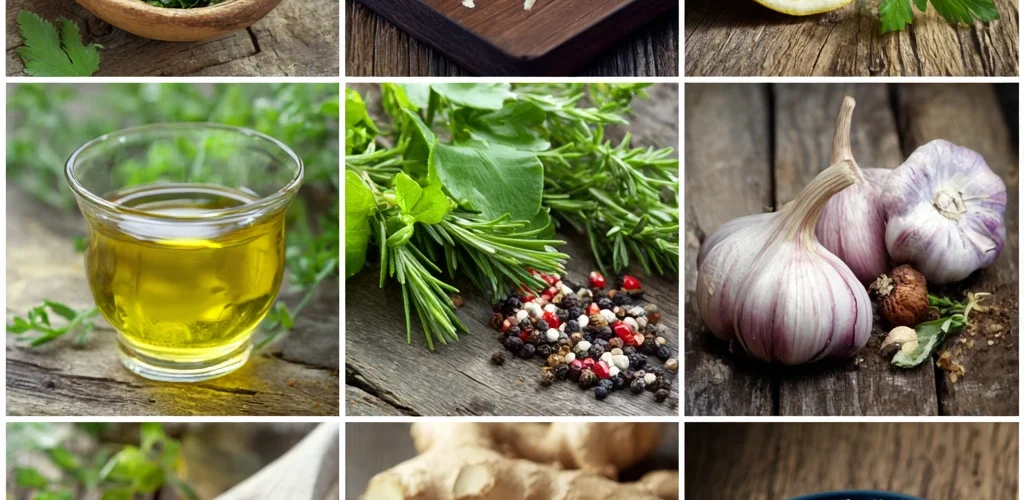Top 10 Fast Fixes for a Dull Meal
Is your dinner tonight looking a little… lackluster? Don’t despair! Even the most uninspired meal can be rescued with a few clever tricks. We’ve compiled the top 10 fast fixes to transform a dull dish into a flavor explosion. These simple solutions use ingredients you likely already have on hand, making them perfect for weeknight emergencies.
1. Acid: The Brightening Star
A squeeze of lemon or lime juice is a culinary superpower. Acidity brightens flavors, cuts through richness, and adds a refreshing zing.
- Why it works: Acid balances sweetness and savory notes, awakening your taste buds.
- Best for: Salads, soups, grilled meats, fish, and even pasta sauces that taste flat. A little vinegar, such as apple cider or balsamic, works too.
- How to use it: Start with a teaspoon and taste. Add more until the flavor pops. For richer dishes, a more generous squeeze might be needed.
2. Salt: The Flavor Enhancer
Salt isn’t just about making things taste salty; it’s about enhancing the natural flavors of your ingredients.
- Why it works: Salt draws out moisture, intensifying flavors and creating a more complete taste experience.
- Best for: Everything! Seriously. From bland vegetables to underwhelming proteins, salt can work wonders.
- How to use it: Season throughout the cooking process. A pinch at the beginning helps develop flavors, and a final sprinkle before serving can make a big difference. High-quality sea salt or kosher salt are excellent choices.
3. Herbs: Freshness in a Flash
Fresh herbs are an instant upgrade, adding aroma and vibrancy.
- Why it works: Herbs introduce complex aromas and flavors that elevate a simple dish.
- Best for: Soups, salads, meats, pasta, eggs, and vegetable dishes. Think parsley, cilantro, basil, chives, dill, mint, and thyme.
- How to use it: Chop herbs just before adding them to preserve their flavor and aroma. Add delicate herbs like basil and cilantro at the end of cooking. Heartier herbs like thyme and rosemary can be added earlier.
4. Spice: A Burst of Heat and Flavor
A dash of spice can add complexity and excitement to any meal.
- Why it works: Spices stimulate the senses, adding warmth, depth, and intrigue.
- Best for: Curries, soups, chili, tacos, stews, roasted vegetables, and even desserts. Chili powder, paprika, cumin, ginger, garlic powder, and cayenne pepper are all great options.
- How to use it: Start with a small amount and adjust to your taste. A pinch of cayenne can add a subtle kick, while a tablespoon of chili powder can transform a bland stew.
5. Fat: The Texture Transformer
A drizzle of good quality oil or a pat of butter can add richness and improve texture.
- Why it works: Fat adds moisture, richness, and a satisfying mouthfeel. It also helps to carry flavors.
- Best for: Vegetables, pasta, grilled meats, and even popcorn. Olive oil, butter, sesame oil, and coconut oil are all excellent choices.
- How to use it: Drizzle olive oil over roasted vegetables for a glossy finish and enhanced flavor. Add a pat of butter to pasta sauce for extra richness.
6. Garlic: The Aromatic Enhancer
Garlic is a powerhouse of flavor, adding depth and complexity to almost any dish.
- Why it works: Garlic's pungent aroma and savory taste create a more appealing and flavorful experience.
- Best for: Pasta sauces, stir-fries, soups, stews, roasted vegetables, and meat dishes.
- How to use it: Saute minced garlic in oil or butter to release its flavor before adding other ingredients. Be careful not to burn it, as it can become bitter. Garlic powder is a convenient alternative.
7. Onions: The Flavor Foundation
Onions are a foundational ingredient in many cuisines, adding sweetness and depth to dishes.
- Why it works: Onions caramelize when cooked, creating a sweet and savory flavor base.
- Best for: Soups, stews, sauces, stir-fries, roasted vegetables, and meat dishes.
- How to use it: Saute onions in oil or butter until they are soft and translucent before adding other ingredients. Caramelized onions add a particularly rich and complex flavor. Onion powder is also a versatile option.
8. Cheese: The Creamy Delight
A sprinkle of cheese can add richness, flavor, and visual appeal.
- Why it works: Cheese adds a salty, savory, and creamy element that enhances the overall taste and texture.
- Best for: Pasta dishes, salads, pizzas, soups, and grilled meats. Parmesan, cheddar, mozzarella, and feta are all popular choices.
- How to use it: Grate cheese over pasta or salads for a quick and easy flavor boost. Melt cheese on top of pizzas or grilled meats for a decadent touch.
9. Nuts & Seeds: The Crunchy Contrast
Nuts and seeds add texture and a subtle nutty flavor.
- Why it works: The satisfying crunch provides a contrast to softer textures, making the dish more interesting.
- Best for: Salads, stir-fries, oatmeal, yogurt, and roasted vegetables. Almonds, walnuts, pecans, sesame seeds, sunflower seeds, and pumpkin seeds are all great options.
- How to use it: Toast nuts and seeds to enhance their flavor. Sprinkle them over salads or stir-fries for added crunch and nutrition.
10. Umami Boosters: The Savory Secret
Umami, the fifth taste, adds a savory depth that can transform a bland dish.
- Why it works: Umami-rich ingredients provide a satisfying and savory flavor that enhances the overall taste experience.
- Best for: Soups, stews, sauces, and meat dishes. Parmesan cheese, soy sauce, mushrooms, sun-dried tomatoes, and Worcestershire sauce are all excellent sources of umami.
- How to use it: Add a splash of soy sauce to stir-fries for a savory depth. Incorporate mushrooms into soups and stews for an earthy flavor. A dash of Worcestershire sauce can transform a bland meat dish.
Revamping Recipes: Practical Applications
Let’s put these fixes into practice. Imagine a bland tomato sauce. First, add a pinch of salt and a pinch of sugar to balance the acidity. Then, sauté some garlic and onion in olive oil before adding the sauce. A dash of red pepper flakes can add a pleasant heat. Finally, finish with a sprinkle of fresh basil and a grating of Parmesan cheese. The result? A vibrant and flavorful sauce that’s far from dull.
Or, consider a plain roasted chicken. Before roasting, generously salt the chicken. Stuff the cavity with lemon halves and fresh herbs like thyme and rosemary. Drizzle with olive oil. During the last few minutes of cooking, baste the chicken with pan juices. The result? A juicy, flavorful chicken with crispy skin.
The key is to experiment and taste as you go. Don’t be afraid to try different combinations of these fixes until you find the perfect balance of flavors for your dish. Remember, cooking should be an enjoyable process. These simple tricks will empower you to create delicious and satisfying meals, even when starting with the most basic ingredients.
Creative Combinations: Taking it a Step Further
Once you’re comfortable with these individual fixes, try combining them for even more impactful results. For example, if your salad is lacking oomph, try this combination: a squeeze of lemon juice (acid), a pinch of salt, a drizzle of olive oil (fat), and a sprinkle of toasted almonds (nuts & seeds). The result is a salad that’s bright, flavorful, and satisfying.
Similarly, if your soup tastes flat, try sautéing garlic and onions (aromatic enhancers) in butter (fat) before adding the broth. Then, add a pinch of chili powder (spice) and a squeeze of lime juice (acid). Finish with a dollop of Greek yogurt (dairy/fat) and a sprinkle of fresh cilantro (herbs). This combination will transform a bland soup into a flavorful and comforting meal.
The possibilities are endless! Use your creativity and experiment with different combinations of these fixes to create your own signature flavor profiles. With a little practice, you’ll be able to rescue any dull meal and transform it into a culinary masterpiece.
Remember: tasting throughout the process is essential.
FAQ: Common Questions About Flavor Enhancement
Q: What if I add too much salt?
A: If you’ve added too much salt, try adding a touch of sugar or acid to balance the flavor. You can also add more of the other ingredients to dilute the saltiness. In soups and stews, you can add a peeled potato, which will absorb some of the salt.
Q: How do I know which herbs to use?
A: Start by considering the cuisine you’re cooking. Italian dishes often pair well with basil, oregano, and rosemary. Mexican dishes often use cilantro, cumin, and chili powder. Experiment and find the flavor combinations you enjoy most.
Q: Can these fixes work for desserts?
A: Absolutely! A pinch of salt can enhance the sweetness of chocolate desserts. A squeeze of lemon juice can brighten fruit salads. A sprinkle of cinnamon can add warmth to apple pie.
Q: What are some other umami-rich ingredients?
A: Besides Parmesan cheese, soy sauce, mushrooms, sun-dried tomatoes, and Worcestershire sauce, other umami-rich ingredients include seaweed (like nori), fish sauce, miso paste, and nutritional yeast.
Q: Is there a right or wrong way to use spices?
A: There’s no single “right” way, but it’s generally best to start with a small amount and add more to taste. Be aware of the heat level of different spices. Chili powder and cayenne pepper can be quite potent, so use them sparingly.
Ingredients:
- Lemon/Lime Juice
- Salt
- Fresh Herbs (Parsley, Cilantro, Basil, Chives, Dill, Mint, Thyme)
- Spices (Chili Powder, Paprika, Cumin, Ginger, Garlic Powder, Cayenne Pepper)
- Olive Oil/Butter
- Garlic
- Onions
- Cheese (Parmesan, Cheddar, Mozzarella, Feta)
- Nuts & Seeds (Almonds, Walnuts, Pecans, Sesame Seeds, Sunflower Seeds, Pumpkin Seeds)
- Umami Boosters (Soy Sauce, Mushrooms, Sun-Dried Tomatoes, Worcestershire Sauce)



